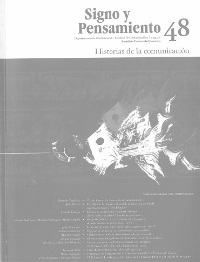Resumo
La deuda en investigación histórica en medios en América Latina es grande; esfuerzos conjuntos se aprecian en algunos países, como es el caso del Brasil y la Red Alfredo de Carvalho (Rede Alcar). De manera particular, en la historia de la televisión son escasos los abordajes realizados, una gran parte de estos trabajos se centran en describir los procesos de instalación de tecnologías y empresas de televisión, así como los tipos de programas que ocuparon las parrillas de programación. El interés de este artículo se descentra de este tipo de estudios para hacer una historia de la televisión que dé cuenta del proceso por el cual una tecnología de información y comunicación se constituye en medio de comunicación masiva; dicho en otras palabras, el objetivo es explicar cómo la televisión pasa a ser parte integral de la cultura (de masas). Es así que, en esta búsqueda se recurre a una primera revisión de archivo, de la prensa diaria, en particular, el periódico Vanguardia Liberal de Bucaramanga, para rastrear el interés suscitado por el advenimiento de esta tecnología.Esta revista científica está registrada sob a licença Creative Commons Attribution 4.0 International. Portanto, este trabalho pode ser reproduzido, distribuído e comunicado publicamente em formato digital, desde que os nomes dos autores e da Pontificia Universidad Javeriana sejam mencionados. Você pode citar, adaptar, transformar, auto-arquivar, republicar e desenvolver o material, para qualquer finalidade (inclusive comercial), desde que reconheça adequadamente a autoria, forneça um link para o trabalho original e indique se foram feitas alterações. A Pontificia Universidad Javeriana não retém os direitos sobre os trabalhos publicados e o conteúdo é de responsabilidade exclusiva dos autores, que mantêm seus direitos morais, intelectuais, de privacidade e publicidade.


